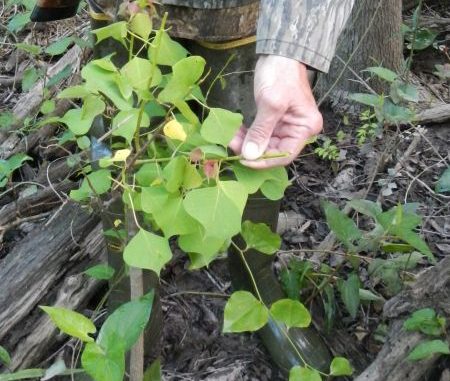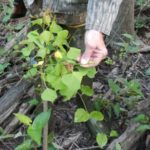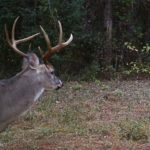
Improving the growth and development of your buck population
Last month, I mentioned that the average score of Mississippi bucks at the Louisiana Sportsman Show was 113 inches, while the average score of Louisiana bucks was 118.
These are not really big deer but are typical of adult bucks being harvested these days, especially in the piney woods.
It has been mentioned in several publications that more adult bucks were harvested in the Southeast than ever before. It is true that hunters are passing up smaller racked bucks with the hopes of killing one that looks like those on the cover of magazines.
Some of this is intentional, but some of it is due to hunters being confused about what to shoot.
Hunters focus on the antlers and often do not look at the whole body structure; consequently, they see an adult buck with a small rack and think it is a young buck that will get bigger.
Many times these small-racked bucks are 3- and 4-year old bucks, and the truth is they are not going to get bigger.
LDWF has been looking at harvest data, and have sent reports to clubs and landowners. If the buck harvest data is limited, it is often difficult to make sound decisions regarding the growth trends of bucks.
Hunters are basically focused on the top bucks — maybe 5 percent of the buck population — and this can make the data very misleading when the buck harvest is composed of two or three top-end bucks.
I have always suggested that hunters harvest from all age classes: Restrict the number harvested in the younger age classes, but collect data and see what your deer herd is doing.
The ideal growth trends for the typical buck segment of a population should look like this: 6-month-old bucks (fawns) should average 60 to 80 pounds; 1½-year-old bucks should average 120-140 pounds; 2½-year old bucks should average 140-170 pounds; 3½-year-old bucks should average 170-190 pounds; and 4½-year-old and older bucks should be close to 200 pounds or better.
Of course, your average weights will depend on the habitat type. Deer in swamp and marsh habitat will have lower average body weights than bucks in pine dominated habitat.
Research has always shown that most 1½-year-old bucks on habitat with good nutrition will produce small-branched antlered racks.
I dare say that in Louisiana spikes are the norm for the 1½-year age class, and in many cases the nutrition is so poor that these spikes are 3 inches or less.
This poor antler development trend is indicative of low body weights. If the 1½-year-old bucks in your data set average 100 pounds or less, you have serious problems.
Because of this, as these bucks grow older, the poor growth trends will continue in the adult age classes.
If your 2- and 3-year-old bucks average less than 140 pounds, you have problems.
Most of the problems are habitat related, while some are due to high deer densities and perhaps a combination of the two. A deer herd must be kept in balance with the habitat or else the habitat will suffer along with the deer herd.
Good nutrition is the key for buck growth and development. It always has been, it always will be the key. Keep the habitat productive, with high-quality browse and other plant foods, maintain a good hardwood component with a diversity of mast species (both hard and soft) and maintain this quality habitat year-round.
Not an easy task, but it is a must if you want to see more than a 113 or 118 B&C buck.
Manage the forest and produce native browse
A properly managed forest will produce sufficient nutrition for deer. Periodic logging and thinning to allow sunlight to hit the ground and controlled burning in the pine forest should produce groceries for deer.
Unfortunately, in pine forest the use of herbicides has eliminated much of the deer groceries, and this causes problems for buck growth and development.
If you hunt on leased land, there is not much you can do. But if you are a landowner and deer are important to you, let me suggest you limit the use of herbicides in your forest.
Browse surveys will determine if the forest is producing sufficient forage for your herd. The survey identifies plants available for deer to eat and determine what plants deer are actually eating.
On our small East Feliciana Parish property, deer have been browsing on a variety of native forages, all of which are first-choice forage species. Elderberry, a very desirable shrub on all habitat sites in the state, has been browsed heavily, but not to the point that it will not continue to grow and produce new leaves.
Also being eaten is greenbriar, blackberry, honeysuckle, privet and a host of quality herbaceous plants that the spring rains have produced in abundance.
Hunters frequently look at the forest, see green and think they have lots of deer groceries, when in fact the green plants they are seeing are pine, sweetgum, climbing fern, grass and yaupon, all of which deer will eat if they have to but that will not do much for growth and development.
Get with a biologist and forester and keep the forest productive for deer.
Feeding
Another way to enhance the nutrition on your habitat is with a feeding program. Feeding deer a high-quality protein pellet year round has proved to be an effective method for increasing body growth and antler development.
It is very expensive, there are implications regarding diseases and, in my opinion, there are better ways to spend money than trying to produce deer with big antlers.
Disabled veterans, cancer programs, St. Jude Children’s Hospital, the Louisiana Baptist Children’s Home all have a need for money. Do something for the human race first, and then if you have some extra money, spend it on the whitetail.
Plantings
No doubt the most commonly used method for improving nutrition on the landscape is with food plots. Planting food plots to grow quality forages to enhance the native vegetation is an activity that most hunting clubs and landowners participate in every year.
It, too, can be a costly activity and, if not done properly, will result in a waste of time and money.
For a planting program to be productive and produce results, the herd must be in balance with the habitat. High deer numbers will eat up a plot and give hunters the impression that the seed did not grow.
Put out a 3-foot circular cage on the plot and let that serve as a visual sign of your planting technique.
If plantings are to be effective in increasing body weights and antler growth, it must be done on a fairly large scale, similar to a farming operation. A few food plots across the landscape will not add much weight to a yearling buck that weighs 100 pounds or add many inches to the rack of a 2½-year-old buck.
For the most part, the average club and landowner simply cannot grow enough to really have an impact on the deer herd. The program can supplement a forest that is lacking in high-quality deer browse.
A good program can also benefit other wildlife species, which is the approach most clubs and landowners should take.
Next month I will get into the specifics of a planting program that will benefit both deer and other game species.




